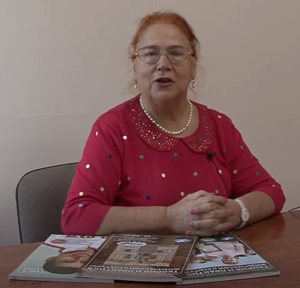Schoolchildren’s physical development rating cross-regional analysis in different regions of the Russian Federation
Фотографии:
ˑ:
Dr.Biol., Professor S.P. Levushkin1
Dr.Biol., Professor V.D. Sonkin1, 2
Dr.Hab., Professor R.I. Platonova3
1Russian State University of Physical Education, Sports, Youth and Tourism (SCOLIPE), Moscow
2Institute of Developmental Physiology, RAE, Moscow
3M.K. Ammosov North-Eastern Federal University, Yakutsk
The study rates and analyzes the schoolchildren’s physical development in the Ulyanovsk and Ivanovo Oblasts and the Republic of Sakha (Yakutia) based on the key motor qualities rating tests. Schoolchildren (n= 16,000) from the Ulyanovsk Oblast (5918 girls and 6099 boys), Ivanovo Oblast (1822 girls and 1724 boys) and Sakha Republic (Yakutia) (452 girls and 268 boys) were sampled for the study purposes. Two of the selected regions were similar (Ulyanovsk and Ivanovo Oblasts) and one (Sakha Republic (Yakutia)) different in the key factors of influence on the physical qualities development process. The tests found the strength qualities widely varying across the regions due to a variety of factors including ethnic and geographic ones, with these factors further recommended being taken into consideration by the physical development test programs. As demonstrated by the study, the physical development tests need to be customized and standardized for the regional specifics.
Keywords: motor qualities; development dynamics; schoolchildren; regions of the Russian Federation.
References
- Barchukova G.V., Sonkin V.D., Zaytseva V.V., Izaak S.I. Uchet morfofunktsionalnoy konstitutsii pri otsenke dvigatelnykh vozmozhnostey uchashchikhsya [Morphofunctional constitution to be considered when estimating students' motor capabilities]. RSAPE Anniversary collection of works of scientists, 1998, vol. 5, pp. 142- 150.
- Bezrukikh M.M., Sonkin V.D., Zaytseva V.V. et al Kharakteristika sredy zhiznedeyatelnosti sovremennykh rossiyskikh shkolnikov [Characteristics of living environment of modern Russian schoolchildren]. Voprosy sovremennoy pediatrii, 2006, vol. 5, no. 5. app 1. Shkola i zdorovye, pp. 31-36.
- Deryabin V.E. Antropologiya: kurs lektsiy [Anthropology: lectures course]. Lomonosov MSU, BD. Moscow: MU publ., 2009, 342 p.
- Izaak S.I. Sostoyanie fizicheskogo razvitiya i fizicheskoy podgotovlennosti detey, podrostkov, molodezhi na osnove tekhnologii populyatsionnogo monitoringa (na primere Rossiyskoy Federatsii) [State of physical development and physical fitness of children, adolescents, youth based on population monitoring technology (case study of the Russian Federation)]. Izvestiya vuzov Kyrgyzstana, 2016, no. 9, pp. 153-156.
- Levushkin S.P., Khamzina V.A., Blinkov S.N. Issledovanie fizicheskogo sostoyaniya uchashcheysya molodezhi [Examination of students' physical condition]. Ulyanovsk: UlSTU publ., 2013, 160 p.
- Uvarov V.A., Novokreshchenov V.V. Teoretiko-metodologicheskie osnovy nauchnogo obosnovaniya Vserossiyskogo fizkulturno-sportivnogo kompleksa «Gotov k trudu i oborone» (GTO) [Theoretical and methodological foundations of scientific substantiation of Russian physical culture and sports complex "Ready for Labor and Defense"]. Vestnik IzhGTU im. M.T. Kalashnikova, 2017, vol. 20, no. 3, pp. 142-147.
- Son’kin V.D., Zaitseva V.V. Statistical and physiological distinction of constitution types. J. Physiol. Anthropol. Appl. Human Sci., 2005, vol. 24, no. 4, pp. 327-331.



